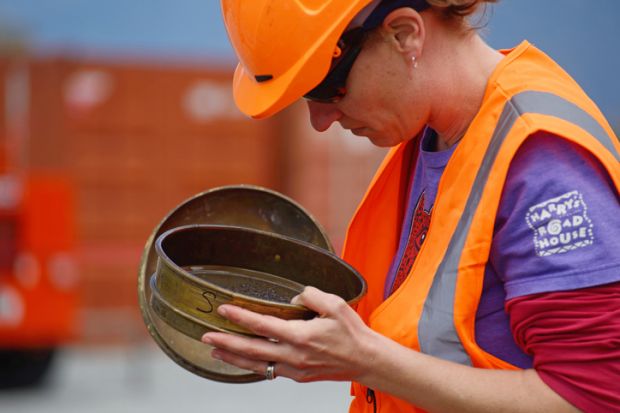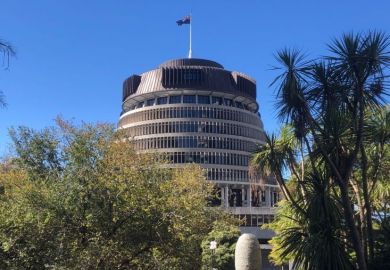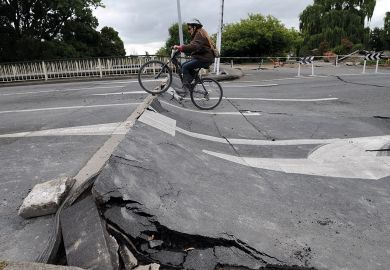Science jobs are vanishing in New Zealand as a review seeks to secure the sector’s future amid steep funding declines.
More than 10 per cent of staff will go at the National Institute of Water and Atmospheric Research (Niwa), one of the country’s seven crown research institutes (CRIs). Niwa plans to jettison between 85 and 90 positions. “We need to reduce our costs in line with the reduction in revenue,” chief executive John Morgan explained.
Niwa’s downsizing comes after the government directed public service bosses to cut around 6.5 per cent of their expenditure, and before the June cessation of the decade-old National Science Challenges (NSCs) programme.
The NSCs have channelled more than NZ$680 million (£324 million) into research since their establishment in 2014, through collaborative projects involving universities, CRIs, businesses and non-government organisations. The scheme has paid many researchers’ wages, supported scores of PhDs and boosted understanding of critical issues, from ageing and diabetes to natural disasters and marine sustainability.
Lucy Stewart, co-president of the New Zealand Association of Scientists (NZAS), said more CRI job cuts were inevitable. “With the NSC money now taken away, it’s not looking great, I would say, for any of them,” she said.
The institutes’ financial woes have been exacerbated by the government’s recent cancellation of the NZ$451 million Wellington Science City project, which would have upgraded the ageing infrastructure of several CRIs and co-located them in three hubs close to the capital.
An evaluation of the science system is being undertaken by a panel headed by former chief science adviser Sir Peter Gluckman, whose 2013 review gave rise to the NSCs. However, its final report is not due until the end of October, suggesting that no new funding is likely before the budget in May 2025.
Scientific job losses are not restricted to the CRIs. Government agency Callaghan Innovation plans to jettison around 30 science and engineering jobs as part of a “strategic reset”. A spokesman said Callaghan wanted to maximise its “impact on innovation ecosystem development, while addressing cost pressures and managing its ageing infrastructure”.
Scientists also feature among the hundreds of public servants set to lose their jobs because of the government’s cost-cutting directive. The Ministry of Business, Innovation and Employment (MBIE), which oversees science and technology, has already jettisoned the equivalent of 286 full-time jobs this year. Outcomes from a second redundancy round are due to be revealed in mid-April.
The Department of Conservation has confirmed a net loss of 130 positions. Biodiversity staff are among the redundancies according to The Post newspaper.
More than 100 jobs have disappeared from the nation’s universities and colleges so far this year, according to the Tertiary Education Union. Most succumbed to “small reviews affecting five to 10 workers”.
Hundreds of university jobs were cut last year, including scores of science positions. Massey University wound up its science programmes at its northern Auckland campus, and the University of Otago suspended or discontinued several science courses.
Universities’ financial woes appear set to escalate after the Tertiary Education Commission warned that they faced system-wide deficits for the first time on record. The science system faces similar challenges, according to an MBIE briefing that highlighted the country’s over-reliance on fixed-term funding mechanisms and inadequate support for emerging areas of research strength.
“We are likely to start losing the capability that we have,” the MBIE warned science minister Judith Collins. “Declining real expenditure is not the only challenge facing the public research sector,” it added. The now abandoned Future Pathways review had attracted almost 900 responses, with “not a single submission claiming the system was working well”.
Commentators say Future Pathways exacerbated the sector’s problems by proceeding too slowly to maintain the momentum of the NSCs. Although a panel was hurriedly assembled to produce a new set of national research policies, the NSC secretariats had wound down their activities by then.
Register to continue
Why register?
- Registration is free and only takes a moment
- Once registered, you can read 3 articles a month
- Sign up for our newsletter
Subscribe
Or subscribe for unlimited access to:
- Unlimited access to news, views, insights & reviews
- Digital editions
- Digital access to THE’s university and college rankings analysis
Already registered or a current subscriber? Login








